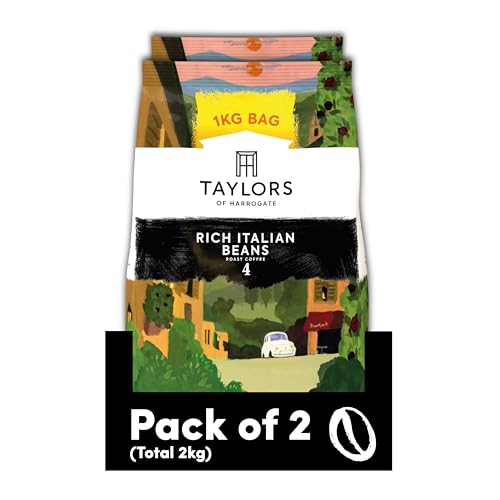Coffee Beans To Buy: 11 Things You're Forgetting To Do

Where to Buy Coffee Beans
If you're a big fan of whole beans the best place to purchase them is at your local coffee independent or roaster. If you're not lucky enough to be near one, search online for companies which roast and ship to you.
The origin of the coffee beans can have a big impact on the taste.
Arabica vs. Robusta

There are over 100 different coffee varieties however, the two most frequently used are Coffea arabica and Coffea canephora (Robusta). Robusta is more resistant to drought, disease and pests. It can be grown at lower elevations and produces more coffee cherries per year. It is also cheaper than arabica in terms of cultivation.
Robusta is responsible for 40% of all coffee produced around the world. While it's true that a subpar batch of robusta can taste like burned rubber, a good brew made with specific beans can easily rival Arabica in flavor. high quality coffee beans is there are a few exceptions, but most of the robusta sold on the market comes from plantations who are focused on quantity.
The high caffeine content of the beans makes them invulnerable to disease and pests. This is why they are the most popular choice for traditional diner coffees and instant coffees. While some companies claim their coffee as being 100 percent arabica, they often mix it with a type of robusta to save money, but provide their customers with a subpar cup of coffee. Robusta coffee can be more harsh, more bitter and grainier than arabica. It may also have an almond, peanut or dark chocolate flavor. Some people find these flavors unpleasant, or even overwhelming.
Origin
Coffee beans are actually seeds which develop inside of small fruit that are colorful and sour, called coffee berries. These berries are pulled from the coffee plant when ripe and then separated into two beans. The beans are roasted and then used to make our favorite brew.
The most popular variety of beans are Arabica and are known for their smooth flavor which isn't bitter. They're also regarded for their richness and capacity to provide a variety flavors. They are mostly grown in Africa, Central America, and South America where the conditions are ideal for the production of high-quality coffee.
They are generally more expensive prices than Robusta due to the fact that they require more attention in order to thrive. For the flavor profile of these beans to develop, they require certain temperatures and sufficient rainfall. In reality, the best coffee beans come from Africa which is where the majority of coffee farms are owned by family-owned farms that operate in a small scale.
When buying coffee, it is essential to determine if the coffee is single origin or not. "Single origin" could mean a range of things, but generally it means that the coffee comes from a single farm, crop or region within one country. Third wave coffee is so excellent because you get to experience it in the most pure form knowing where it came from.
Grind
The quality of the coffee you consume will be affected by the way it is prepared. Try different grind sizes and brew methods will allow you to discover the best blend of beans that matches your personal preferences.
The size of the grind has a major impact on the extraction of coffee solids soluble from the grounds. This affects the flavor of the coffee. If the grind is too coarse it is difficult for water to penetrate the grounds to extract the coffee solids that are soluble. This is known as under extraction and may result in a weak cup of coffee. If the grind is too fine, the water flows through the grounds too quickly and suffers an over extraction, which results in bitterness.
You can buy pre-ground coffee but it's better to purchase the whole bean and grind your own beans immediately before brewing. This will ensure that your beans are fresh and will also last longer than if were to purchase the pre-ground coffee.
The burr grinding machine is ideal for a consistent grind, but you can utilize a food processor, hand-grinders or a mortar and pestle. Burr grinders have two cutting discs that break beans into a particular grind consistency by altering the distance between the burrs. A smaller gap produces the finest grind, whereas the larger gap produces a coarser grind.
Storage
Coffee beans degrade at a rapid rate after they've been exposed, so it's a good idea to keep the bag tightly shut and only grind the amount you'll need for the next time you brew. It is also advisable to look into buying a resealable canister that will shut out air and allow CO2 off-gassing that occurs when the beans are first ground to escape.
Whole bean coffee can remain at its freshest for up to a month if stored in a safe manner. Once ground, the quality of your coffee can decrease in just 30 minutes. This is why it's best to only grind the amount you'll need and then store the remainder of your beans in an airtight and opaque container.
You can choose from a variety of attractive and easy-to-use containers for storing coffee. Some are vacuum-sealed to keep moisture from getting inside. Some come with a one-way valve that releases the gasses produced by freshly roasted beans, which helps prolong the freshness of beans.
The best place to keep your coffee that is not used is an area that is cool and dark with a constant temperature. Avoid storing your coffee near your stove or the oven as heat can accelerate chemical reactions that weaken the coffee. Keep the beans out of direct sunlight will cause the beans to absorb the caffeine and lose flavor.
